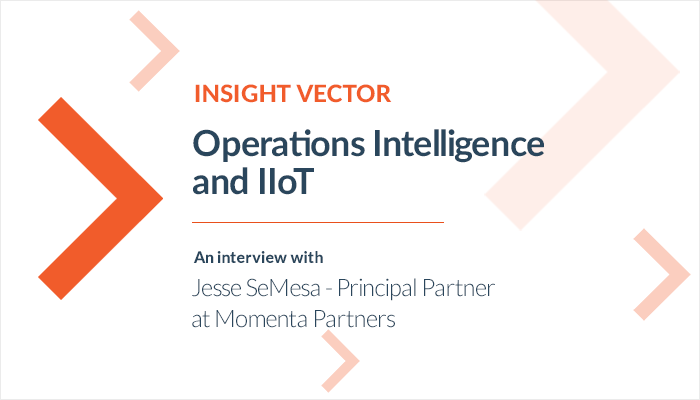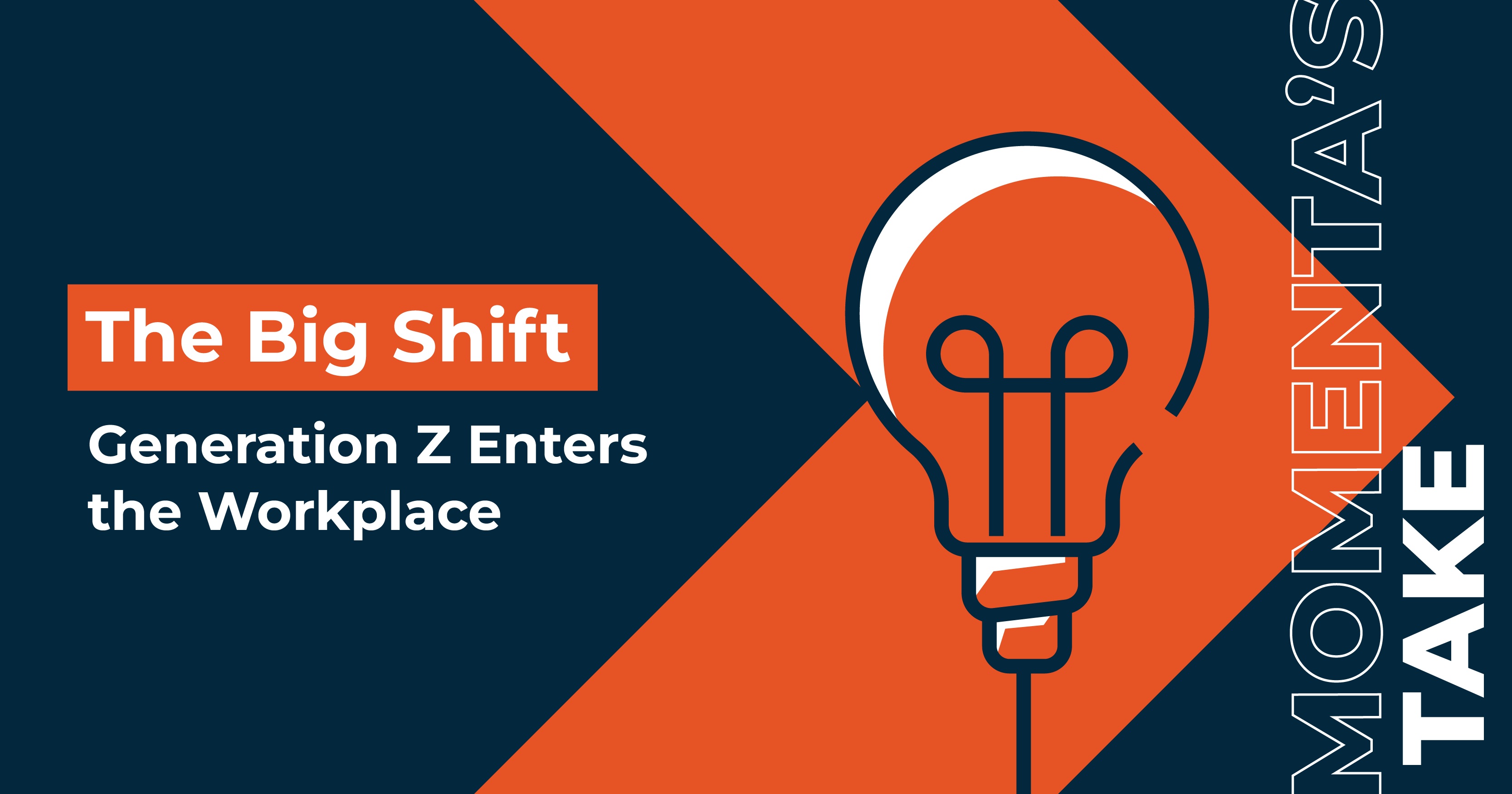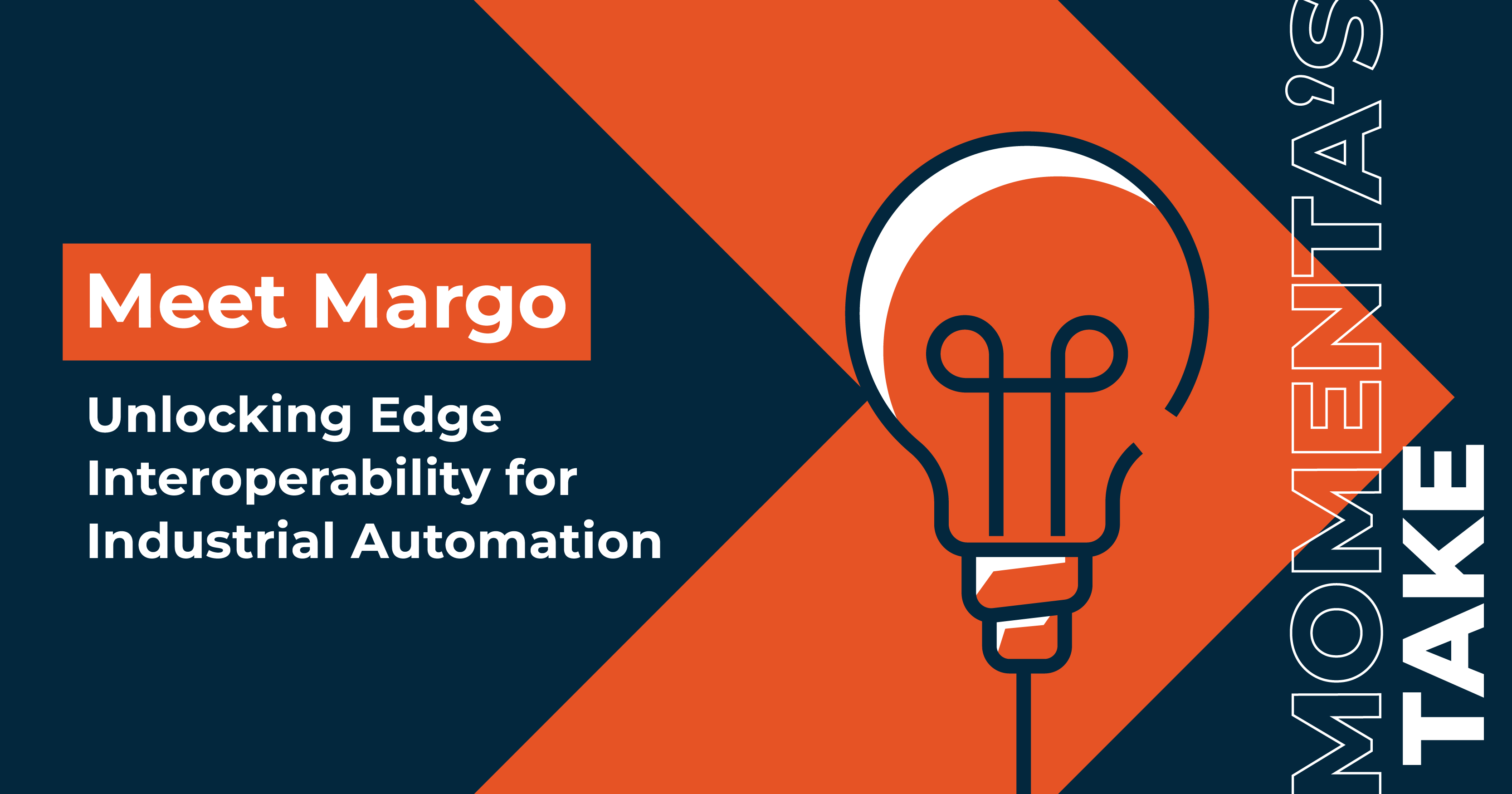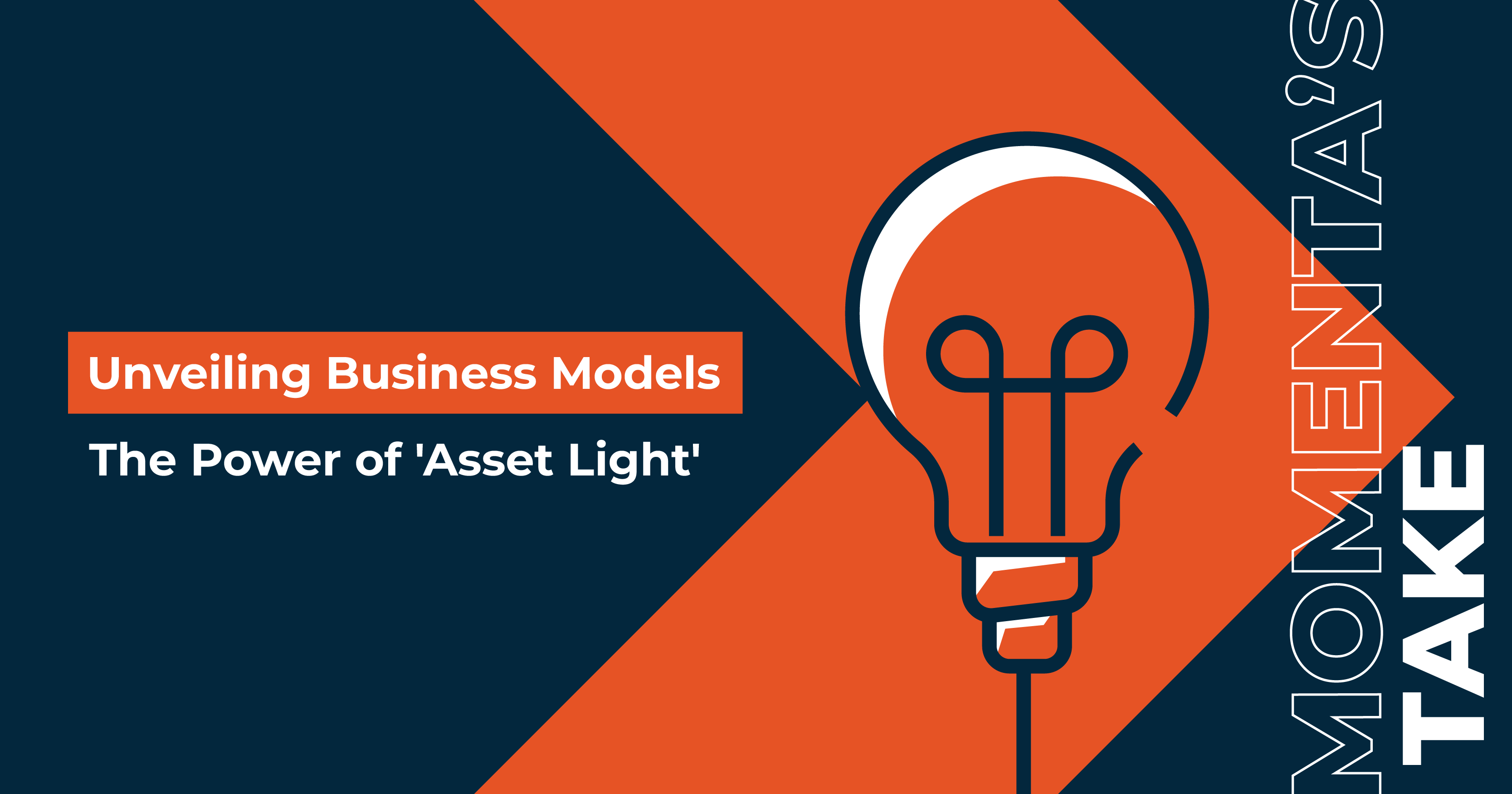Insight Vector: Operations Intelligence and IIoT, An Interview with Jesse DeMesa
Ken Forster

 Innovation and market perspectives from leading IOT innovators.
Innovation and market perspectives from leading IOT innovators.
One can truly call Jesse DeMesa one of the founding minds of Industrial IOT software. Our conversation explored how the origins of specialized Operation Intelligence software in the 1990s has evolved to today’s IOT platforms.
Jesse lead development for Wonderware InTouch, founded IndX Software (acquired by Siemens) and has applied his experience working with the Oil and Gas industries at Siemens and GE to other industries.
 |
Jesse DeMesa Principal Partner, Momenta Partners |
I have a computer and software engineering background. I started my career in data acquisition and industrial platforms, and met Ken Forster when I was at Wonderware, and took over as architect and R&D director for InTouch, their flagship product before the IPO. InTouch is the market leader in the “human-machine interface” category. After Wonderware went public I left to found a software company called IndX and develop the market leading product, XHQ, and pioneer the space which became known as Manufacturing Intelligence – a precursor to the Industrial Internet. SAP, Siemens and Cargill strategically invested seeing our vision meet the burgeoning demand of major industrial companies. We were deeply rooted in real-time situational awareness driving class-leading operational performance.
What is your background in industrial software?
XHQ was a platform for Manufacturing Intelligence - we called it Operations Intelligence since we integrated the entire operations for manufacturing and process industries. We ran on a single Windows server on-site that provided deep-dive, real time access to data and events from all operational systems. Our emphasis was in large site operations as exist in upstream and downstream O&G, petrochemical facilities, much like control centers GE has for managing the operations of critical, rotating equipment across global facilities to allow subject matter experts manage vital operations. There were three companies that emerged from Wonderware’s IPO to compete in this space. IndX was acquired by Siemens in 2003, the others were Lighthammer bought by SAP in 2005, Incuity was bought by Rockwell in 2008.
We initially had the vision that visibility and decision making afforded by control systems - which were largely siloed - could be applied across the entire organization – essentially a ‘cockpit’ for your facilities. Big oil and gas companies like Chevron and ExxonMobil had successful custom solutions yet couldn’t maintain the pace of innovation needed from with an industrial platform. Our vision was a hypothesis, but it turned out that every major oil and gas and process industry company bought into this because they did not have the visibility to react and apply real-time intelligence across the entire site operations -whether they wanted to boil oil, make jet fuel or gasoline. They had very mature operational systems – control systems, maintenance systems, lab quality systems, environmental systems - but the data from those systems was siloed and we helped to bring all of that together.
What drives demand for Operations Intelligence?
For big industrial firms, it’s like trying to fly a plane without the information you need in real time. Operations Intelligence is to operations and manufacturing what Business Intelligence (BI) is to the enterprise. The biggest challenge is real-time situational awareness. BI systems do not support monitoring real-time streams while allowing you to drill down, analyze the data and make immediate decisions. Integrating data into an aggregated real-time view across the organization is hard. If you have a downstream unit in a plant affected by an upstream unit you previously had to call the unit operator or just do the best you could, therefore making very conservative decisions impacting profitability. With Operational Intelligence software, a VP of refining could get visibility into the entire operation and track performance to plan. All of this is still very relevant to today’s market.
What are unique technical challenges for industrial software?
Much like today we have time-series data stream sources – a typical refinery would have up to 300 streams of data to manage the process. This is 300 process variables, managing production, monitoring key operating parameters, and the like. The real-time and high-frequency characteristics of the data gave rise to specialized systems called Plant Historians. You can’t easily replicate a system like this. The data needs to be integrated to the specific protocols to the plant floor and control systems integration to put the data in context to be useful to plant management, process engineers and control room operators. Today for IIoT the challenge is magnified 100-fold as operations is trying to improve performance by adding hundreds and thousands of sensors across the operations.
What is different about bringing traditional industrial systems together with modern IT?
A lot of the IT breakthroughs have been driven by consumer applied internet technologies - Facebook, Google, Amazon. Powerful advanced analytic and modeling technologies have been used to analyze consumer buying patterns and apply predictive marketing – how to you drive sales or clicks through better analytics. What we see as the key goal is how to apply the power of predictive analytics to the world of connected machines, and this is all about combining specific industrial domain expertise. The goal is to take the knowledge of physics and process and marry them with analytics, to capture data across all equipment classes. Let’s use the example of GE. GE fundamentally makes “big things that spin”. GE is able to apply their equipment knowledge and domain expertise in wind farms, jet engines, power plants etc. and generate significant profits from positive business outcomes and long term service contracts. They were the first to understand how to drive high levels of returns delivering guaranteed performance levels for their own equipment.
What are distinct hurdles companies face making the transition to Connected Industry?
Well, big companies can say they don’t need help - but they do. To go from being a traditional equipment supplier to providing connected services requires new capabilities in many areas. How do you take expertise around servicing your equipment to servicing others - and delivering value across an entire system or operation?
Moving to systems and solution selling is a different business and major transition; just as selling service contracts was a major transition. Each transition is a 4-year journey to get good at it. The move from selling services around major equipment to selling a solution is very different; it requires engaging different stakeholders and operational decision makers in the organization.
Are there different levels of the organization you need to learn to address?
Operations Intelligence changed the conversations that technology vendors were having with management. When Chevron integrated their entire upstream operations in Kazakhstan, they were able to provide executives the ability to know how they were “trending” in real time towards production goals and quarterly metrics. As a result, we were getting access to C-level and VP-level execs. For large industrial companies for instance, turbines are sold to procurement groups sourcing rotating equipment - but these technologies do not become the everyday ‘go to solution’ for VP or C-level to drive significant business and operational results of their production sites. Because of the impact across the entire operations and business, Connected Industry solutions like Operations Intelligence is like selling financial management systems and ERP systems to the C-level. Developing this type of engagement with the organization is something many industrial vendors don’t possess. Consultative selling and being top of mind to the C-Suite and senior executives is a new discipline for many industrial companies. This is going beyond selling equipment and equipment services to selling enterprise solutions and business outcomes.
What are other non-technological hurdles?
Change-management is a big challenge – you can get the system up and running but if you don’t help the customer transform their business operations they won’t get value from it. GE had to transform their industrial businesses to engage customers in a new way. How they sell, consult and advise had to be change. A key difference is being able to engage senior leadership on the operational side of the organization and the enterprise side as well.
What about the core challenges combining industrial tech with IT?
It’s not that easy to mix industrial systems experts and domain experts with the high-tech community in the Silicon Valley to drive product strategy, roadmaps, and technology decisions. The landscape of technologies to choose from today is enormous. In the past it was a simple choice - Oracle, IBM or Microsoft for instance when selecting database tech - pick the top 3 and do a 6-month evaluation. Today the landscape is so massive that companies need help mapping the different technologies into specific vertical and industrial requirements. Do you wait until the market shakes out and winning suppliers and technology choices are clear? What are the risks of waiting too long?
What’s your view of Industrial IOT platforms?
The notion that there will be hundreds of platforms that survive – there has to be a shakeout with a few winners. Previously, Oracle, IBM had technology platforms for general purposes - and then there were vertically, domain specialized platforms. Platforms adoption has to reach significant scale to sustain innovation, without scale these platforms and the applications they support won’t survive. There can only be a few truly horizontal platforms.
Looking at the landscape, GE for the industrial world wants to leverage the success using their own platform to bring their platform to the industrial world and drive scale and future innovation. GE believes that a horizontal industrial platform must have specialized security, real-time, machine learning and industrial oriented capabilities – essentially the platform itself needs to be industrialized. If you believe that is the way forward, they could be one of the winning platforms. Siemens has a different viewpoint, there are too many industrial segment specializations to wrap into a single industrial platform. For them, it’s about connecting and contextualizing data from equipment, devices and workflows for each major vertical industry.
AWS has taken their own cloud computing platform that powers the back end for many different commerce sites and made it the foundation for industrial applications and solutions. Then if you want to focus on specific industrial equipment and applications and use AWS or Azure as your platform and provide everything around a suite of industrial use cases that’s another approach. PTC acquired ThingWorx which is a mashup visualization platform but PTC needed to provide the “full stack” so they acquired Axeda and subsequently Kepware. Alternatively, there can be “platforms” for a suite of industrial application, and ultimately I believe there will be a few leading horizontal platforms and multiple winning application suites powered by ‘verticalilzed’ platforms.
If you’re interested in discussing Operations Intelligence and IIoT further, please get in touch.



